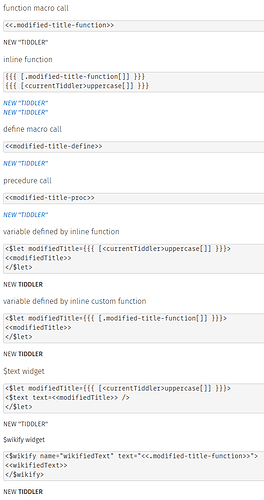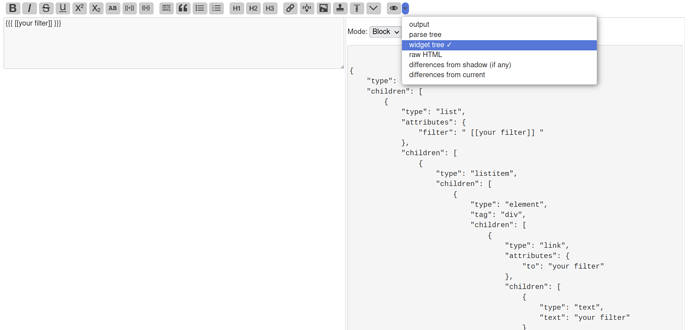I am often confused by how to get a string of WikiText displayed with (inline) parsing applied. I am always trying around until I find something that works. Since the number of options has recently increased with the introduction of filter functions and procedures, I made a reference tiddler for my personal use that might be of use to others, too, maybe.
The title of the Tiddler is New ''Tiddler'' and contains the following definitions at the top:
\define modified-title-define() {{{ [<currentTiddler>uppercase[]] }}}
\procedure modified-title-proc() {{{ [<currentTiddler>uppercase[]] }}}
\function .modified-title-function() [<currentTiddler>uppercase[]]
I used this title to generate a string that is readily available in currentTiddler, but I want to modify it with a filter function, here uppercase for demonstration purposes. Otherwise I’d just use <<currentTiddler>>.
I am posting a screenshot, since it’s difficult to transfer the tiddler output to TWTalk.
The output I want is the unlinked string (because the modified tiddler doesn’t exist) with the word Tiddler in bold and uppercase, same as $wikify outputs – but noone uses $wikify if not absolutely necessary. The only other way to get this seems to be using $let / $set.
If someone has other ideas and/or examples let me know.
Here is a link to a sharing edition with the tiddler.


